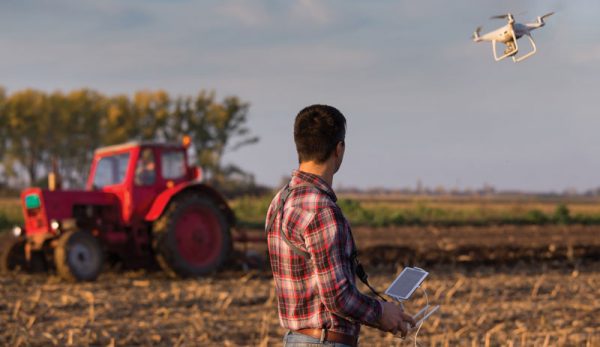
Drones are quickly revolutionizing agriculture. They effectively take photographs, track field health and irrigation, and engage in precision seed planting and crop spraying. If you don’t have an ag drone, there’s a good chance you might in the future.
Here are a few important tips and best practices for owning and operating an ag drone.
1. Know the law
You’ll need to register your ag drone with the Federal Aviation Administration and keep up with all federal, state and local guidelines, which change as this technology develops.
You might even want to check with your lawyer and insurance agent, just to be safe.
2. Read the manual
An ag drone is not a television you can just plug-in and expect to work without instructions.
It’s a complicated and expensive piece of technology that you need to operate competently and safely, for the sake of the drone and everyone around it. Read the manual closely and file it for later reference.
Will farming with drones become the new normal?
3. Practice
Developing your ability to efficiently operate your ag drone is not a quick process. You need to take time to learn the controls.
For safety, start in an open area and practice manual and programmed flights. To continue developing your piloting skills, gain more diverse experience by maintaining different altitudes, using various cameras, traveling new flight paths and flying during all times of day.
4. Follow a Preflight Checklist
Before operation, make sure your ag drone is prepared for a safe and effective flight.
Your preflight check should include:
- calibrating the drone’s compass
- ensuring the battery is fully charged
- reviewing any system notifications
- checking the drone’s propellers and landing gear as well as all nuts and bolts
If you use a rotor-wing drone, you can also hover in place for a bit to verify aerial stability before having the drone begin its work.
5. Stay Alert
Most manual drone flight crashes happen because of pilot inattention. When operating your ag drone, always keep it within your field of sight, watch for trees, birds and other obstacles, and keep the drone level and below the 400-foot federal altitude limit.
You also should not use the ag drone in public or in bad weather. So avoid flying around pedestrians or in rain, fog, lightning, snow or strong wind.
6. Prepare for the Inevitable
You should know up front: Batteries will drain and your drone will crash. Sorry, it’s just the reality of ag drone operation.
But you can be prepared by having multiple batteries and spare parts available for when you need them.
When flying, always leave enough battery for the return flight, keeping in mind that while flying lower allows for better field-imaging, flying higher covers more ground faster with less battery use.
This article, which was compiled by EquipmentTrader.com, originally appeared in the July/August 2019 issue of Hobby Farms magazine.




